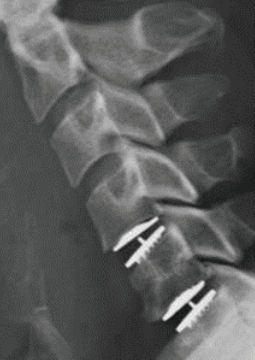Mobi-C Cervical Disc was the first cervical disc in the U.S. approved to treat more than one level of the cervical spine, and Mobi-C is the only artificial disc with published clinical results out to 10 years for one- and two-levels.
At 10 years, all patient-reported outcomes of Mobi-C recipients were equivalent to or improved from 7 years. Recipients of Mobi-C reported improved Neck Disability Index (NDI) Scores, improved neck pain, and improved arm pain. In addition, no subsequent surgery at an adjacent level occurred between the 7-year and 10-year follow up.1,2
Ten-Year Outcomes of 1- & 2-Level Mobi-C® Patients: Extended Follow-Up from the Mobi-C IDE Study

The following presentation summarizes the key results of the Mobi-C 10-year study that was recently published in Neurosurgery.1 Upon completion of the 7-year FDA Investigational Device Exemption (IDE) study of the Mobi-C® Cervical Disc, follow-up continued on a subset of patients from nine high-enrolling centers. All patients in the study had undergone cervical disc arthroplasty (CDA) with Mobi-C for the treatment of degenerative disc disease (DDD) with radiculopathy or myeloradiculopathy at one or two contiguous levels from C3-C7 (Fig. 1).
Clinical and radiographic outcomes of 187 Mobi-C patients were collected through 10 years postoperatively to assess the long-term safety and effectiveness of Mobi-C. The 10-year outcomes of the Mobi-C patients were assessed without comparisons to ACDF, as follow-up of the ACDF control group from the IDE study was completed after 7 years of follow-up.2 The aim of this analysis was to determine whether the statistically significant improvement observed in both 1- and 2-level Mobi-C patients from baseline to 7 years postoperatively was maintained out to 10 years.